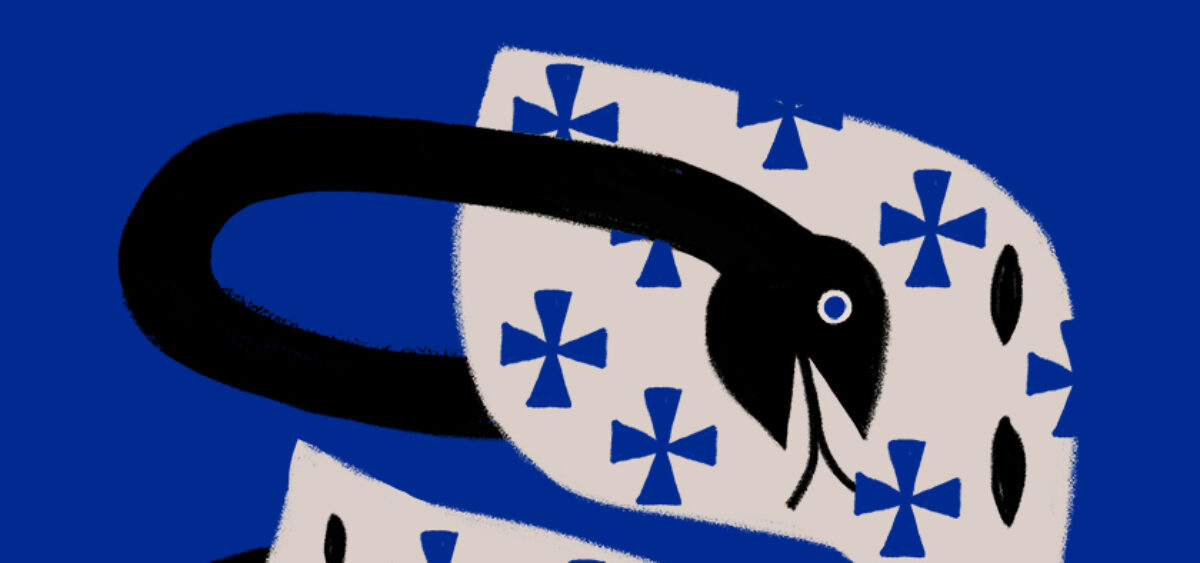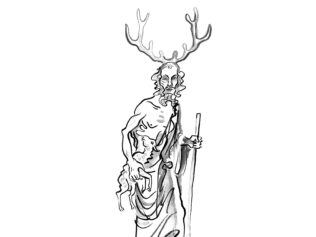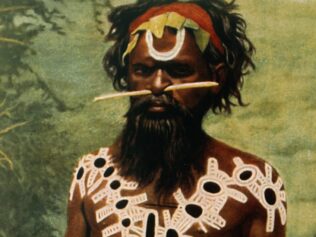
The symbolism of Asclepius remains present in our world today: modern medicine is still represented by the image of the Greco-Roman god’s serpent coiled around his staff. But it’s worth remembering that the fifth century healing methods applied in the temples of Asclepius did not rely on pharmacology.
The supplicant roomed at a special temple guest house and was prepared by priests. There was animal sacrifice—preferably of roosters—fasting, bathing in ice-cold springs, and ritual cleansing. If they had a dream the priests considered favorable, the next night would be spent in an abaton, an innermost temple room inaccessible to lay people. There, the patient would lie on a bed called a klínē (the root word of “clinic”), where they waited for a healing experience that could occur through a spontaneous vision, or a dream should they fall asleep.
To this day, researchers have come across over seventy detailed accounts of healings in the temples of Epidaurus, Cos, and Tiber Island. Carved into stone tablets, patient testimonies were carefully stored, and included their identity, illness, and the dream they had in the temple. Thanks to these records, the form Asclepius usually took is well-documented: a tall and bearded man, holding a staff, sometimes accompanied by his wife, daughters, and a dog.
During a dream or vision, Asclepius would often touch the ailing part of a patient before disappearing, the contact having healed them. There were instances where the god didn’t offer an immediate cure, instead advising on some form of long-term therapy. Among these remedies were regular cold baths, watching plays, composing music or poetry. In some cases, Asclepius recommended a specific drug. A charming legend has it that the Greek physician Hippocrates drew his knowledge from reading the dreams of patients in the temple of Asclepius in Cos.
However frivolous these methods might seem from today’s perspective, they were certainly considered to be exceptionally effective in Ancient Greece, given the extraordinary renown of both the healing temples, or Asclepions, and Asclepius himself—the most popular of all the Hellenic deities. More than two hundred Asclepion ruins have been counted to date, and as archeological technologies and discoveries continue to develop, more are expected to emerge.
Researchers were quick to notice similarities between Asclepius and Jesus Christ. They are both gods of the sick and afflicted, to whom they send help and comfort. The first artistic representations of the Christian Messiah, in the form of catacomb paintings, depict him in the white garb of Greek physicians, with a beard and wearing sandals, much like the early visions of Asclepius.
The dispute between early Christian theologians and pagan philosophers in the work of Celsus, who flourished in the late-second century, took the form of a question about the superiority of either of these deities. In his polemic, The True Word, Celsus offered an interesting argument that Asclepius was the better god for humans because they could have a direct encounter while dreaming in the temple. This, according to Celsus, helped establish a stronger individual bond with the deity.
The bishops of the early Church also recognized the competition of the cult of Asclepius, thus encouraging the destruction of his temples. The Basilica of St. Bartholomew on Tiber Island is a former temple of Aesculapius, as he was known in Latin. Interestingly, one of the best clinics in modern-day Rome—the Fatebenefratelli Hospital—is located just eighty meters away.
This translation was re-edited for context and accuracy on May 12, 2022








